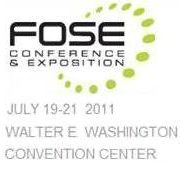In describing computer displays, what do the terms “transmissive,” “reflective,” and “transflective” mean?
Transmissive is the most commonly used means of illuminating a computer display. The display is lit up from the back. While this method is fine for indoor use, strong sunlight may overwhelm it, making the computer screen difficult to read.
Reflective method does very well in the bright outdoors. The computer is illuminated by the reflected light of the computer’s surroundings. The brighter the sun, the brighter the display. However, it does not do well in dim settings, i.e. indoors.
Transflective combines the transmissive and reflective methods of illumination. This gives the viewer the best of both worlds, enabling the display to be optimized for the greatest variety of environments.
Even though transflective appears to be the best method, it may not be the best for you. You need to consider your applications specific needs, including energy usage, heat generation, and issues such as compatibility with night vision goggles. Display brightness may also be affected by chemical treatment of the surface (anti-glare coating), viewing angle, contrast controls, and a host of other factors. For more information, see Are nits the only important rating for hi-bright display?



Good overview! The importance of a mobile computer display that is easily viewable under all lighting conditions cannot be overstated, especially for industrial/vertical market deployment.
In terms of history, early transmissive displays were essentially unusable outdoors. Experiments with purely reflective screens in the late 1990s were also unsatisfactory due to the weak indoor performance.
In the early 2000s, most outdoor displays were transflective, but instead of combining the best of reflective and transmissive technologies, more often than not, they succeeded in neither.
From 2005 on, we saw increasingly better optically treated transmissive displays that used linear and circular polarizers as well as anti-reflective coatings, special layer bonding and strong backlights to provide good outdoor contrast without any reflections, as well as superior indoor performance.
Interestingly, now we’re starting to see what might be called second generation transflective designs that come much closer to providing the “best of both worlds” you’re mentioning.
Also important: smudge-resistance as fingerprints and grease are much more visible and annoying outdoors, and staying away from the glossy finish most consumer displays have these days as it’s near-impossible to eliminate reflections on those. And, in my book, viewing angle plays an important role. It should be near 180 degrees from all angles, without any color shifts.